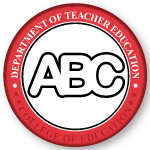Author ORCID Identifier
Document Type
Conference Proceeding
Publication Date
10-22-2017
Journal Title
Geological Society of America Abstracts with Progams
Volume
49
Issue
6
Abstract
In 2016, the North Carolina Museum of Natural Sciences (NCMNS) received funding from NSF’s Collections in Support of Biological Research Program to launch a new citizen science initiative—FossilPhiles—aimed at improving publically accessible natural history specimen data. The FossilPhiles project supported NCMNS’ ongoing efforts to digitize paleontology collections and provide STEM opportunities for historically underrepresented student populations by engaging middle and high school students in authentic data collection.
Five students were chosen from area schools with underserved populations to digitize highly significant or visually impactful vertebrate, invertebrate, and paleobotanical fossil specimens (e.g., type specimens, rare collections, specimens of high public interest). Students were trained in specimen handling, collections data, and archiving. They collected standard measurement data, photographed specimens in 2D, and constructed 3D photorealistic models using photogrammetry. Over a period of six months, students took over 13,000 photos, documenting 176 specimens in 2D and 137 in 3D. Of these, 124 photos have already been uploaded to the NCMNS’ open-access collections database, accessible through the NCMNS’ website, GBIF, VertNet, and iDigBio. Future project plans include creation of a publicly accessible, interactive portal of the 3D specimen models.
Throughout their internships, FossilPhiles students were provided training and opportunities to communicate their experiences with the broader community. The entirety of the FossilPhiles project took place within the glass-walled Paleontology Research Lab (PRL) in the Nature Research Center of the NCMNS, on view to NCMNS’ ~1 million annual visitors. Additionally, students were regularly engaged with communicating about the project in real-time via social media outlets (e.g., Twitter, blogs), sharing photos of fossils they worked on, facts and skills that they learned, and challenges they overcame. FossilPhiles students also partnered with peers engaged in non-STEM museum internships to promote cross-learning. They collaborated with the NCMNS’ Teen Newsroom program to produce a video interview about their evolving impressions on what it means to be a scientist.
Recommended Citation
Button, K., Cross, L., Rende, K., Weaver, P. G., Van Veldhuizen, J. A., Herzog, L. L., & Zanno, L. (2017, October). Turing teens into FossilPhiles: Citizen science and advanced visualization of paleontology collections. In Geological Society of America Annual Meeting. Seattle, Washington, USA-2017. GSA. DOI:10.1130/abs/2017AM-296858


Comments
Abstract presented on Sunday October 22, 2017 8:00-12:00pm room 606 at the GSA Annual Meeting in Seattle, Washington in Session 12, T64 Citizen Science in Paleontology: harnessing Public Interest to Advance Research and STEM Education
© Copyright 2017 The Geological Society of America (GSA), all rights reserved. Permission is hereby granted to the author(s) of this abstract to reproduce and distribute it freely, for noncommercial purposes. Permission is hereby granted to any individual scientist to download a single copy of this electronic file and reproduce up to 20 paper copies for noncommercial purposes advancing science and education, including classroom use, providing all reproductions include the complete content shown here, including the author information. All other forms of reproduction and/or transmittal are prohibited without written permission from GSA Copyright Permissions.